MARKET OVERVIEW
The Global Preclinical Imaging Market is going to reach horizon transmission once research labs and pharma slash through disease mechanisms at the cellular and molecular levels. The industry will extend its activity beyond that of normal preclinical drug development, into a much wider scientific narrative linking diagnostic imaging techniques with precision medicine, gene editing, and advanced diagnostic innovations. The Global Preclinical Imaging market will become a collaborative platform that bridges interdisciplinary research across biology, chemistry, and data science, rather than serving as a supportive tool for trials of pharmaceutical compounds.
Beyond the capacity of the market today, there are not only modern technologies coming into it but also new applications. Preclinical imaging, which has been conventionally applied to the models of oncology or efficacy evaluation, will soon extend into regenerative medicine research, where it may visualize the behavior of stem cells in vivo. Thus, researchers can observe biological processes in a degree of resolution never before possible, enabling the study of neural regeneration, cardiac repair, and autoimmune mechanisms. No longer will technology be restricted to usage models but will evolve new, adaptable imaging methodologies that will adopt protocols allowing studies across multiple species, diseases, and targets.
One further dimension with which the Global Preclinical Imaging market is likely to expand in future is its linkage with computational biology. With artificial intelligence taking an increasingly prominent position in the preclinical workflows, image-data sets will be cross-referenced against genomic, proteomic, as well as metabolomic data, and this way, integrated models of disease progression will be created. These hybrid datasets will not only improve predictive accuracy for preclinical trials but also significantly accelerate the feedback loop between experimental design and outcome analysis. Imaging will function less as a snapshot and more as a dynamic timeline that provides continuous data throughout the preclinical journey.
What lies beyond the current boundaries will also be global collaboration. It is shared data hubs and open-access imaging repositories that will nurture transparency across institutions and geographies. Even scientists in underfunded laboratories will be able to access anonymized imaging databases and analytics tools, leveling the playing field and extending the knowledge beyond traditional academic strongholds. This kind of interlinking would make findings from individual studies to have larger-scale impacts and could spur cross-border partnerships limited by siloed data.
In sustainability will also determine the future path of the Global Preclinical Imaging market as growing concerns increase in laboratory surroundings. Impressive imaging systems will be designed with energy-efficient components and smarter resource utilizations.
Global Preclinical Imaging market is estimated to reach $6,197.29 Million by 2032; growing at a CAGR of 5.1% from 2025 to 2032.
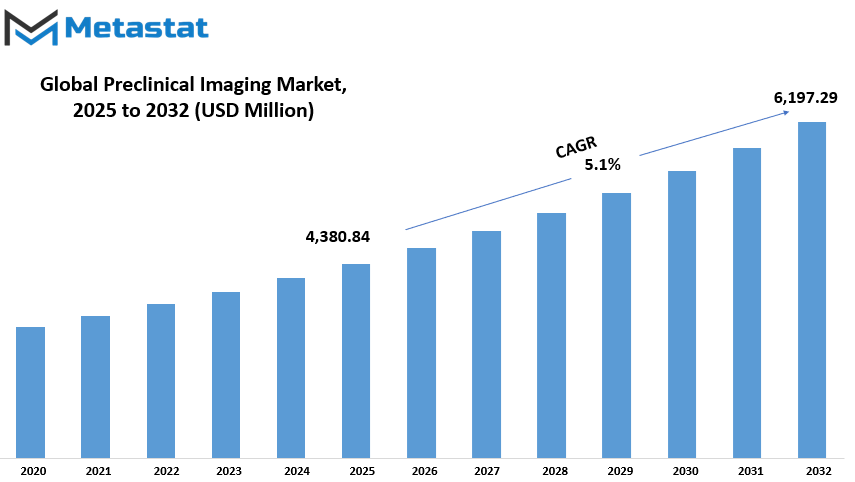
GROWTH FACTORS
The Global Preclinical Imaging Market depicts stable growth, driven primarily by an increasing need for early-stage drug development and discovery. In an increasingly fast-moving medical landscape seeking efficient avenues for getting treatment candidates to the market, the relevance of preclinical imaging stands out even more. These imaging modalities allow researchers to visualize biological processes at work inside their living animal models before they begin human trials. Thus the scientists may better understand the pharmacokinetic profile of their drugs, predict subsequent tests' outcomes, and unveil possible problems early on in the development process.
One advanced imaging technology is one of the market's greatest drivers. Recent systems are delivering clearer images in less time, thus promoting speed and accuracy of the tests. Improved techniques make researchers more efficient, minimize errors, and enhance decision-making. Ultimately, the shortening of timelines will contribute to reducing costs of development for the pharmaceutical companies, perhaps in the long run. To an extent, the latest technological advances are accessible only to those able to pay, constituting a barrier to be surmounted by many a small laboratory and research institution. This price element is one of the most considerable constraints facing the industry today.
Another major setback consists of the regulatory restraints. Whenever the new technology is developed, it follows a lengthy route of approval before becoming applicable in a real-life research setting. Such regulations are actually a hammer to hit and make sure that every research is safely carried and efficient. On the contrary, their presence becomes a deterrent to speed because innovation is moving at a much higher rate than the update of its own policies.
Nevertheless, despite these restrictions, the market's outlook has brightened significantly. Many developing countries are ramping up spending on pharmaceutical research, offering new growth avenues. As the waves roll in, the expectation is that across nations, developing new research niches should increase the preclinical imaging tool demand. Furthermore, with the rise of using artificial intelligence and machine learning, interpretation of the imaging data has been facilitated. These tools provide the capability of rapid identification of patterns and results, which in turn enhances the efficiency and reliability of the whole process.
All said, while there are some hurdles in the way, the Global Preclinical Imaging market has a positive way ahead. Combining the burgeoning demand, the smart tools, and interest getting global are considered to keep pushing the market progress far.
MARKET SEGMENTATION
By Product Type
The increasing demand for detecting anywhere early and accurate detection is a significant driving factor in the global preclinical imaging market. This is the market where medical professionals and scientists conduct their research to try to find the underlying causes of diseases and thereby successfully improve the efficacy of treatments. High-end imaging tools become all the more a necessity with increasing research made in the area of cancer, neurology, and cardiology for preclinical studies. These imaging systems operate in laboratories and research institutions and can inform researchers about biological processes before any testing on humans.
The preclinical imaging products market has grown, especially in terms of imaging systems types. Product Types can be further classified into Imaging Systems, which dominate by a huge margin valued at $1,271.63 million dollars. These include Micro-MRI Systems, micro-ultrasound Systems, Micro-CT Systems, Photoacoustic Imaging Systems, and other state-of-the-art tools. Each plays a unique role. Micro-MRI Systems provide for researchers the ability to make detailed images of soft tissues without harm to the test subjects. Micro-ultrasound Systems are used for high-resolution imaging, particularly in small animals, yielding real-time results. Micro-CT Systems are predominantly used for acquiring 3D images of internal body structures, thus assisting the user in studying the development of bones and organs. Photoacoustic Imaging Systems combine light and sound to produce images that show structure and function giving more views things to the researchers.
These instruments have their unique advantages; however, this may also fast-forward research and improve the accuracy, resulting in drug development efficiency. Such imaging is therefore vital since most of the research is from pharmaceutical companies to animals for safety and efficacy tests before proceeding to man. This reduces chances and saves time and resources.
Chronic diseases are on the increase with a continuously aging population, and a large amount of money is being poured into research and development. All these factors have provided an impetus toward growth in this market. Conversely, such government support switches a number of organizations into adopting this technology. With significant advancements being experienced by technology, these imaging systems are being made more effective and user-friendly by the day.
In brief, the global preclinical imaging market is on growth path. The early diagnosis and personalized medicine are attracting interests; therefore, the need for advanced imaging systems will continue growing and later emerge as a very important force shaping the medical research arena.
By Reagents
The global preclinical imaging market has been emerging with the increase in research for drug development coupled with the increasing requirements for early and accurate testing methods. One major segment in the market relates to the reagents which have improved clarity and quality of imaging results. Besides improving imaging visibility, it also allows researchers better understanding of biological processes having been monitored effects of new treatments before they are taken to humans. It facilitates the early detection of diseases and later observation of how effective a treatment is proving to be.
The reagents of this market can be classified into different segments. These include preclinical optical imaging reagents, preclinical nuclear imaging reagents, preclinical MRI contrast agents, preclinical ultrasound contrast agents, and others. Preclinical optical imaging reagents are mostly used in non-invasive way for following changes inside the body with the help of light. Such reagents highlight certain tissues or cells and allow the following of disease progression or treatment response. Preclinical nuclear imaging reagents used for tracking radioactive markers that show up in imaging scans allow one to understand how the drug is moving in the human body or how well it has reached the targeted area.
Their use is very different, and MRI contrast agents are to improve the images from magnetic resonance imaging. These agents can make certain areas possible clearer and could help to spot any abnormal changes in tissues, such as a tumor or inflammation. Preclinical ultrasound contrast agents would work during an ultrasound test to enhance the sound wave signals that would create a much better picture inside the body. This would help especially when studying the heart or blood vessels.
Each reagent works differently based on the study performed and tissue or organ examined. Thus, the "other" group includes cases with limited numbers of reagents or the newer types still tested or utilized for very specific uses. The growing need for reliable and exact imaging instruments in the coming future goes along with the increasing pace of research, contributing to the continuous progress in the development of better reagents. Advances develop faster bringing new therapies to market, as well as contribute to reliability and detail in preclinical studies. As long as technology advances and the need for safer and more effective healthcare solutions within the peoples' reach increases, the future of reagents in preclinical imaging will keep growing.
By Application
The global preclinical imaging market is promisingly on the rise as demand increases for greater precision in early testing before trialing with humans. It is used mostly in research laboratories for studying diseases, testing novel drugs, and understanding treatment modalities from within the body. This imaging allows scientists and researchers to see internal organs and tissues in small animals, mostly mice or rats, without surgical intervention. The patient remains alive for the duration of the study and can thereby study how a disease evolves or how the drug reacts over time.
Other applications include rare diseases, metabolic disorders, and early accurate imaging, generally leading to better treatment pathways. Well, this procedure is very noninvasive; it is the visualization in a living subject of biological processes, without any invasive procedure.
Increased investment by more and more research institutes and pharmaceutical companies into drug-related development is bound to keep escalating the need for reliable images. These advancements will bring researchers several steps closer to developing safer and more effective treatments while changing the understanding and management of diseases ahead of starting clinical testing in humans.
By End User
By end user, the global Preclinical Imaging market for commercial purposes is actually sourced from pharmaceutical and biotechnology companies, research institutes, and many others. All these three groups play some role in the increase in the number of users turning to preclinical imaging technologies for understanding diseases and new drugs long before it is subjected to clinical testing. Pharmaceutical and biotechnology companies happen to be some of the best customers for such services. These companies have always had one goal in mind, and that is to evaluate new drugs' efficacy and safety through highly advanced imaging techniques in animal models before they can be extrapolated to reality. They face major pressure to deliver safer and more efficacious medicines on time to the market. Hence, these investments are grading into preclinical imaging, enabling them to make faster, evidence-based decisions.
Research institutes also use preclinical imaging instruments quite extensively but generally do so with the following considerations, which are typically basic science and understanding the initial events in disease formation like cancer or some changes in the brain due to specific conditions. All these researchers do monitor biological processes in vivo. Therefore, it is very convenient for such researchers to monitor the possible effect of therapies or genetic modifications at very fine details. Many of such research institutes work closely with universities and medical centers to further develop innovations in imaging techniques and tools that would later be used in industry and healthcare.
The third group, referred to as "others," includes contract research organizations (CROs), academic labs, and government agencies. CROs contract preclinical services to pharmaceutical customers who want to outsource this aspect of their research process. By doing so, it reduces costs and saves time before the initiation of clinical trials. Academic labs, on the other end, use preclinical imaging to support a variety of studies that may not be directly linked to drug development. The government is also associated with public health research or regulatory purposes while using these.
It is true that each would come with very unique requirements and goals but would all benefit from the ability to visualize and track what is happening in one's body without the invasive process. However, with continual improvement in the accuracy and reduction in the price of technology, preclinical imaging will keep growing across all these sectors. Be it for testing new medicines, understanding disease pathways, or improvements to then current treatments, these end users will further the shape of the future for the global preclinical imaging market.
|
Forecast Period |
2025-2032 |
|
Market Size in 2025 |
$4,380.84 million |
|
Market Size by 2032 |
$6,197.29 Million |
|
Growth Rate from 2025 to 2032 |
5.1% |
|
Base Year |
2024 |
|
Regions Covered |
North America, Europe, Asia-Pacific, South America, Middle East & Africa |
REGIONAL ANALYSIS
The segmentation of the global preclinical imaging market covers North America, Europe, Asia-Pacific, South America, and the Middle East and Africa. North America includes the United States, Canada, and Mexico. Europe includes countries such as the United Kingdom, Germany, France, Italy, and other nations that group under Rest of Europe. The Asia-Pacific region consists of India, China, Japan, South Korea, but all other countries belong to Rest of Asia-Pacific. South America is represented in its main countries, which are Brazil and Argentina. The remainder is included in the Rest of South America category. Meanwhile, the Middle East & Africa include GCC countries, Egypt, South Africa, and the Rest of Middle East & Africa.
All these regions cut their roles regarding the growth of the Preclinical Imaging market. North America is likely to remain strong as far as sophisticated research facilities, a strong healthcare system, and a greater emphasis on drug development are concerned. The positioning of great pharmaceutical companies along with strong funding support for medical research have also increased the demand for preclinical imaging in the U.S. and Canada. Europe is seeing fair demand for these technologies, given the well-developed medical research landscape and stringent regulatory framework. Key players in pioneering advanced imaging tools in the region are Germany and the UK.
Asia-Pacific becomes progressively more important due to increasing investments in healthcare, the establishment of research institutions, and the growing interest in the fields of drug discovery and development. Growth potential can especially be seen in China and India because of their large populations and increasing government initiatives in health research. Japan and South Korea, on the other hand, contribute through their sophisticated technological prowess and developing research infrastructure.
South America is not as big and developing as the others, but it is developing gradually into this market with Brazil and Argentina leading the charge. Gradually, this region is gaining momentum with the increasing awareness of disease research at early stages and improvements in health access. Finally, the Middle East & Africa region are under development, but as there is increasing investment in healthcare infrastructure, it will attract more attention. These include progress from the UAE and Saudi Arabia from the GCC, while South Africa and Egypt become more active in supporting research activities. The more these regions mature, the more important their roles will be in the global Preclinical Imaging market.
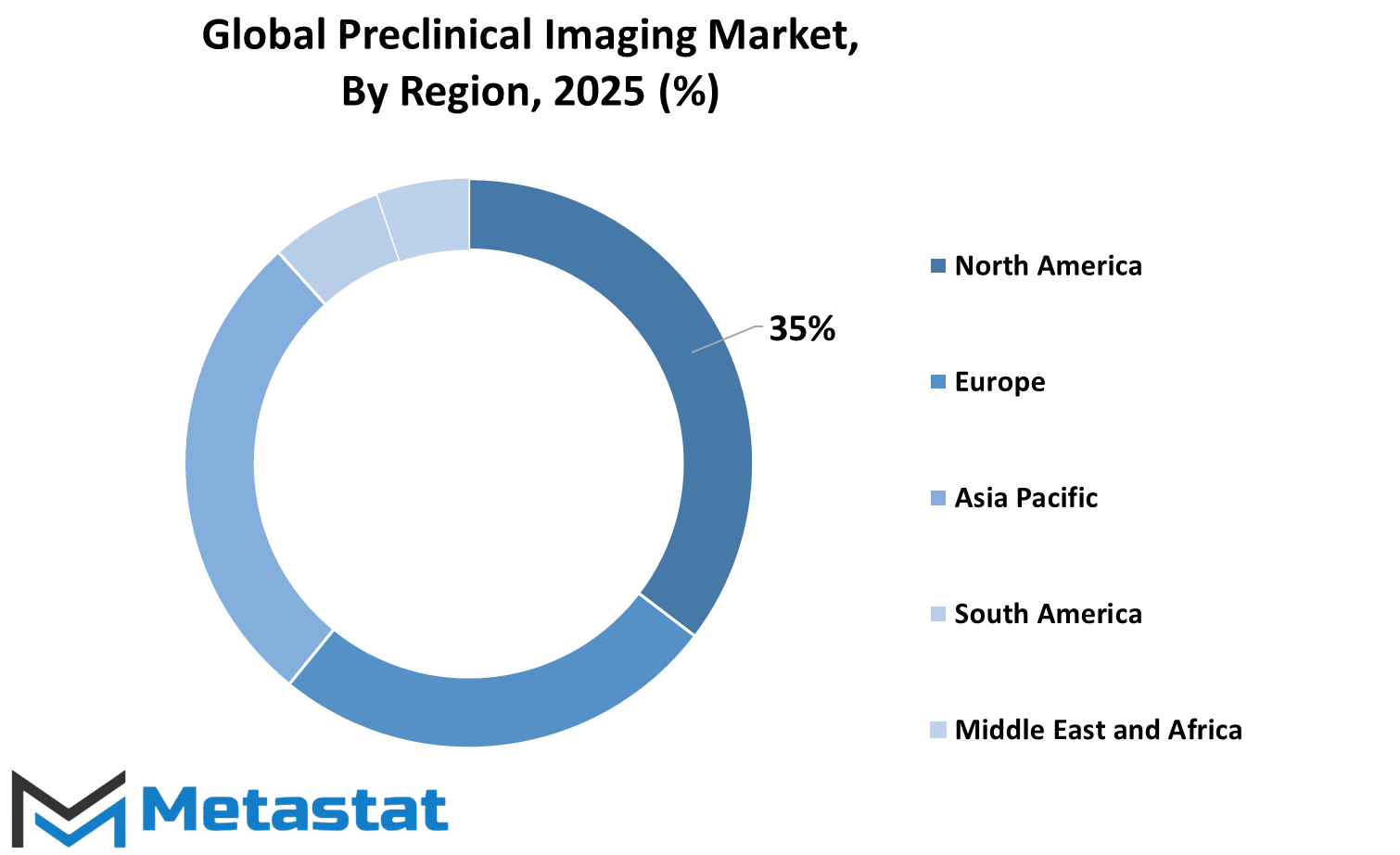
COMPETITIVE PLAYERS
The international Preclinical Imaging market is a big push for medical research. It prompts scientific advancement by allowing researchers to study diseases and test new treatments in animals before applying them to humans. Imaging for preclinical studies should be predominantly noninvasive, enabling the examination of either drug action or disease progression in small animal models. To obtain imaging data in the preclinical world, a variety of techniques, including MRI, PET, CT, optical imaging, and ultrasound, are used, each of which may reveal somewhat different information about the workings of a disease or the workings of some therapeutic intervention.
With research into advanced such diseases as cancer, neurological disorders, and heart diseases, very much have always been talking about improving devices with respect to accuracy and complexity. Improvement has also been gradual over time in instrumentation and software used for preclinical studies. These companies are now offering improved high-resolution instruments with much shorter scan times and advanced multimodal imaging methods housed in one system. These improvements also take into account being more efficient in research and reducing the number of animals used in studies through clearer and more accurate data.
Some of the leading imaging companies are well known for providing state-of-the-art imaging solutions for academic and research institutions. Other players in the foreground of the preclinical imaging market include Bruker Corporation, Revvity, Inc., Siemens Healthineers AG, Fujifilm VisualSonics Inc., Mediso Ltd., MILabs B.V., Scintica Instrumentation. Inc., MR Solutions, Cubresa, Inc., ICONEUS, Aspect Imaging, Molecubes NV, and Viewworks. These companies constantly endeavor to innovate to gain a competitive edge. Many of them also partner with universities and research centers, ensuring their innovations are relevant and applicable for real-world studies.
Impelling expansion in this market is increased funding in life sciences and healthcare research. Medical research funding has been upped significantly by authorities and private bodies from around the world; this in turn has incited further demand for using preclinical imaging. In addition to this, the further shift to personalized medicine, coupled with newer treatment paradigms, has made preclinical imaging an even more crucial pillar in the process of research.
Overall, the Preclinical Imaging market will continue to grow; indeed, dynamic growth will be reflected in the appearance of more novel health challenges and increasingly high demands for disease comprehension. Expect this marketplace to be always the cornerstone of medical research with technologically evolving industrial players committed towards improvements.
Preclinical Imaging Market Key Segments:
By Product Type
- Imaging Systems
- Micro-MRI Systems
- Micro-ultrasound Systems
- Micro-ct Systems
- Photoacoustic Imaging Systems
- Other
By Reagents
- Preclinical Optical Imaging Reagents
- Preclinical Nuclear Imaging Reagents
- Preclinical MRI Contrast Agents
- Preclinical Ultrasound Contrast Agents
- Other
By Application
- Oncology
- Cardiology
- Neurology
- Infectious diseases
- Immunology & inflammation
- Other Applications
By End User
- Pharma And Biotech Companies
- Research Institutes
- Other
Key Global Preclinical Imaging Industry Players
- Bruker Corporation
- Revvity, Inc.
- Siemens Healthineers AG
- Fujifilm VisualSonics Inc.
- Mediso Ltd.
- MILabs B.V.
- Scintica Instrumentation, Inc
- MR Solutions
- Cubresa, Inc.
- ICONEUS
- Aspect Imaging
- Molecubes NV
- Viewworks
WHAT REPORT PROVIDES
- Full in-depth analysis of the parent Industry
- Important changes in market and its dynamics
- Segmentation details of the market
- Former, on-going, and projected market analysis in terms of volume and value
- Assessment of niche industry developments
- Market share analysis
- Key strategies of major players
- Emerging segments and regional growth potential



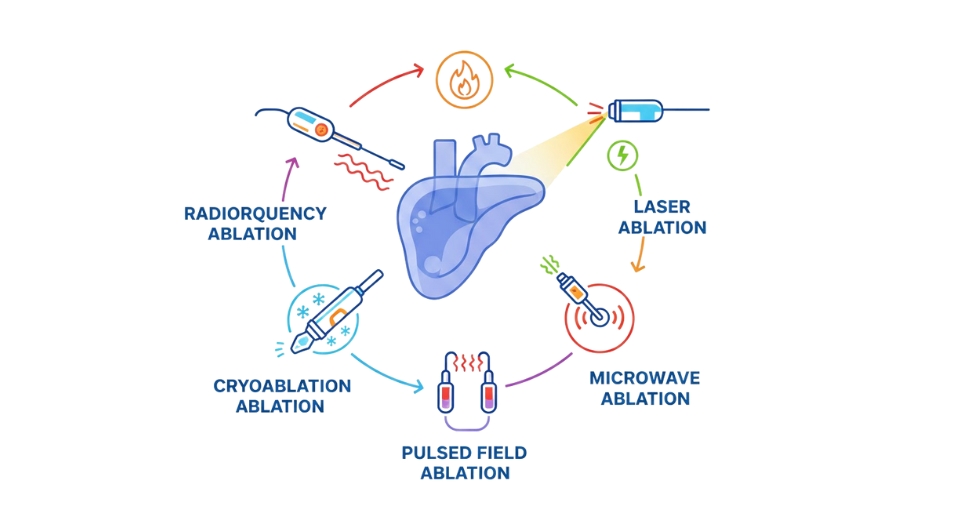

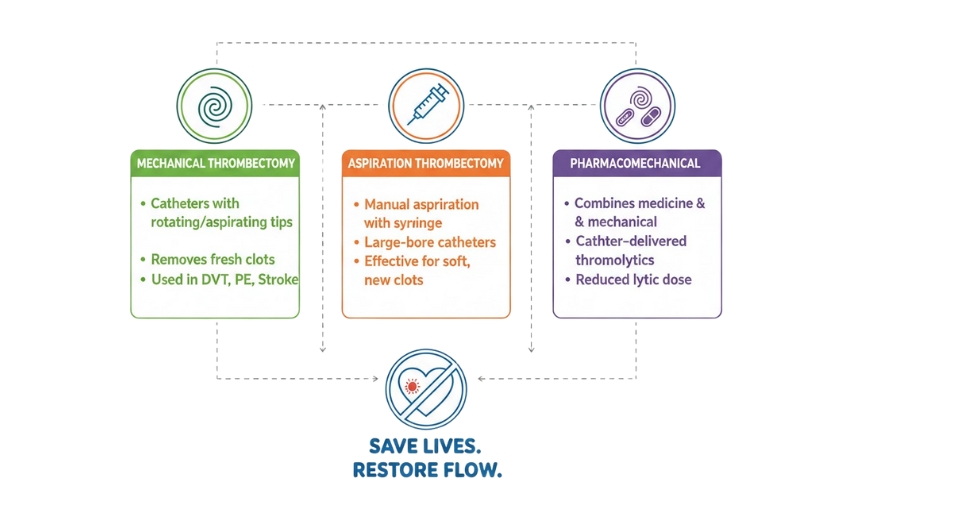
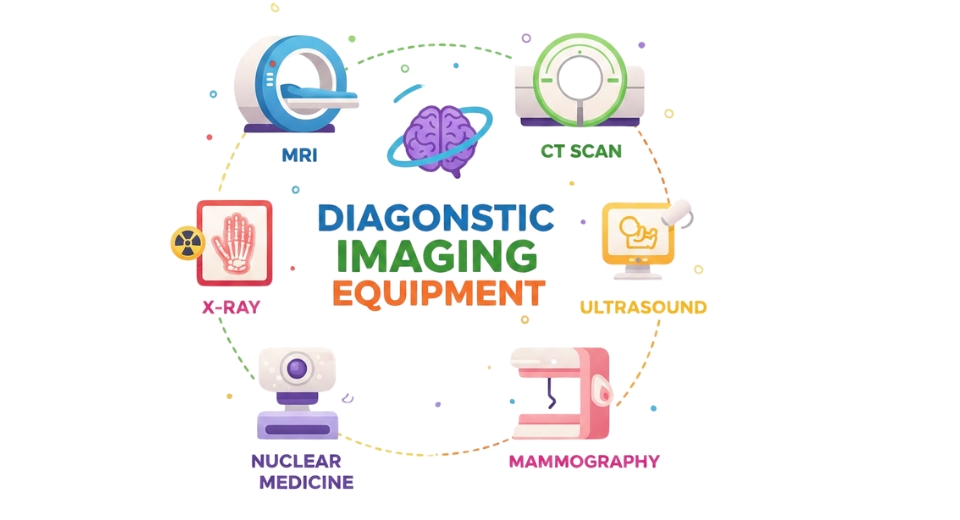

 US: +1 3023308252
US: +1 3023308252






